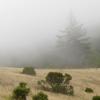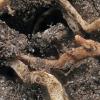 INSTITUTE FOR NATURAL RESOURCES
INSTITUTE FOR NATURAL RESOURCESYou are here
TOPICS
Landscapes and Ecosystems

Biodiversity is the variety of life, and the processes that support it, encompassing species and their genetic variation.

Conservation refers to preservation, protection, or restoration of the natural environment, natural ecosystems, vegetation, and wildlife. Oregon’s Conservation Strategy offers a blueprint for the state's conservation efforts.

Ecoregions are geographic areas with characteristic features such as climate, geology, geomorphology, soils, ecosystem processes, and natural assemblages of plants and animals.

Natural hazards refers to atmospheric, hydrologic, geologic, and wildfire phenomena that have the potential to affect humans, their structures, or their activities adversely.

Landscape assessment reviews existing conditions for vegetation, wildlife habitat and potential hazards to prioritize where natural resource management activities may be most effective and result in desirable conditions.

A natural area is land managed for scientific research and education that contains important biological or physical attributes. In Oregon, these lands are established under the Natural Areas Act.

Ecological restoration processes recover ecosystems disturbed by human or other kinds of disturbances.

Soil quality impacts biological and agricultural productivity, environmental quality, and plant and animal health.

Vegetation can refer to either the plants or plant communities that occupy a given area.

The term "watershed" is commonly used to refer to an area in which all surface waters flow to a common point. USGS identifies 92 watersheds in Oregon.

Providing access to information to evaluate large landscapes over time in the West

Wetlands are uniquely productive and valuable ecosystems with permanent or seasonal standing water. Salt marshes, pitcher-plant bogs, mountain fens, and desert saltgrass flats are just a few of the wetland types in Oregon.









